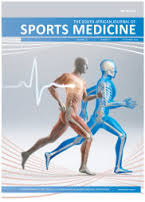Preventing the seemingly unpreventable – challenging the return-to-play criteria for recurrent hamstring strain prevention
DOI:
https://doi.org/10.17159/2078-516X/2018/v30i1a3401Abstract
Background: Hamstring strains are one of the most common injuries in sport. Previous injury has been found to be one of the greatest risk factors associated with recurrent hamstring strains. Although rehabilitation programmes have been developed and implemented to aid safe and efficient return-to-play, the incidence of hamstring injuries has not decreased.
Discussion: As hamstring strains most commonly occur during the eccentric phase of muscle action, rehabilitation should focus on eccentric muscle strengthening. The L-protocol and the Nordic Hamstring Exercise protocol strengthen the hamstring muscles eccentrically. They have been found to be effective in decreasing the incidence of new hamstring strains as well as the rate of recurrence. This commentary therefore aims to suggest changes to the return-to-play criteria following hamstring strains to prevent the seemingly unpreventable.
Downloads
Downloads
Published
Issue
Section
License

This work is licensed under a Creative Commons Attribution 4.0 International License.
The South African Journal of Sports Medicine reserves copyright of the material published. The work is licensed under a Creative Commons Attribution 4.0 (CC BY 4.0) International License. Material submitted for publication in the South African Journal of Sports Medicine is accepted provided it has not been published elsewhere. The South African Journal of Sports Medicine does not hold itself responsible for statements made by the authors.
How to Cite
- Abstract 702
- PDF 664





.png)